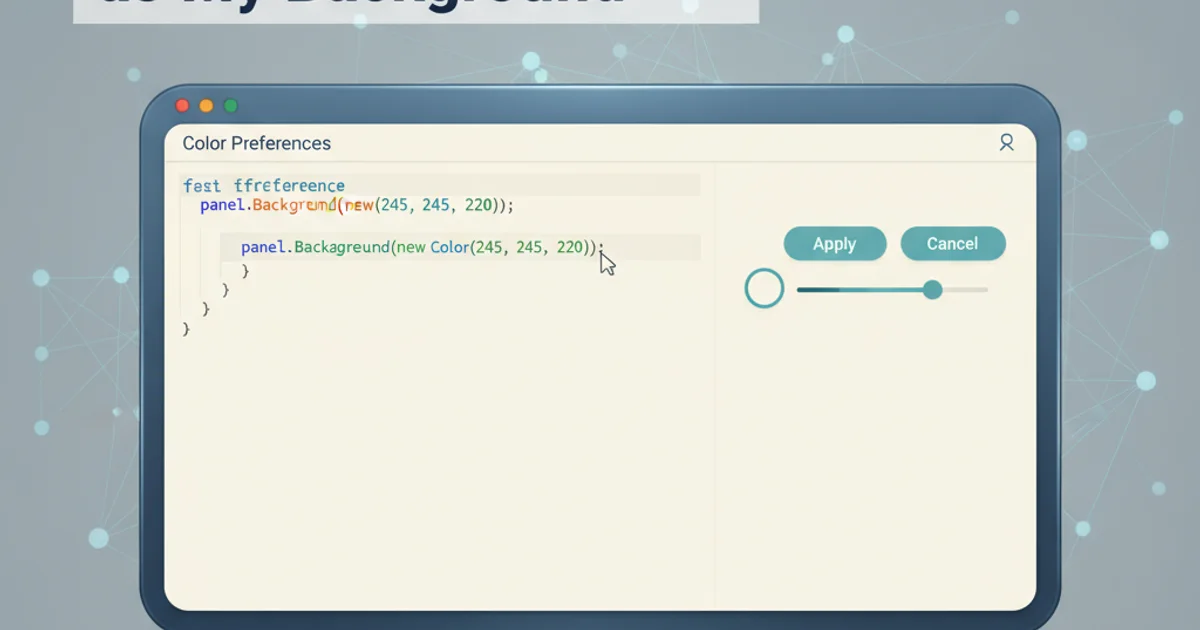Exponentials in python: x**y vs math.pow(x, y)
Categories:
Exponentials in Python: x**y vs. math.pow(x, y)

Explore the nuances of calculating exponents in Python using the built-in ** operator and the math.pow() function, understanding their differences in performance, type handling, and precision.
Python offers two primary ways to compute the power of a number: the ** operator and the math.pow() function. While both achieve the same mathematical result in many cases, they have distinct characteristics that make one more suitable than the other depending on the context. This article delves into these differences, covering aspects like argument types, return types, performance, and error handling, to help you make an informed decision.
The ** Operator: Built-in and Versatile
The ** operator is Python's built-in exponentiation operator. It's highly versatile, supporting various numeric types including integers, floats, and even complex numbers. Its behavior is generally intuitive and aligns with standard mathematical expectations for exponentiation.
print(2 ** 3) # Integer exponentiation: 8
print(2.5 ** 2) # Float exponentiation: 6.25
print(4 ** 0.5) # Fractional exponent (square root): 2.0
print(-2 ** 2) # Operator precedence: -(2**2) = -4
print((-2) ** 2) # Parentheses change precedence: 4
print(2 ** -1) # Negative exponent: 0.5
print((1+2j) ** 2) # Complex number exponentiation: (-3+4j)
Examples of using the ** operator with different number types.
** has higher precedence than unary negation. So, -2 ** 2 is equivalent to -(2 ** 2), resulting in -4. Use parentheses (-2) ** 2 for 4.The math.pow() Function: Floating-Point Focus
The math.pow() function is part of Python's math module, which provides access to common mathematical functions. A key characteristic of math.pow() is that it always converts its arguments to floating-point numbers and always returns a float. This can be a crucial distinction, especially when dealing with large integers or when exact integer results are expected.
import math
print(math.pow(2, 3)) # Returns 8.0 (float)
print(math.pow(2.5, 2)) # Returns 6.25 (float)
print(math.pow(4, 0.5)) # Returns 2.0 (float)
print(math.pow(-2, 2)) # Returns 4.0 (float)
print(math.pow(2, -1)) # Returns 0.5 (float)
# math.pow does not support complex numbers
# print(math.pow(1+2j, 2)) # TypeError: can't convert complex to float
Examples of using math.pow() and its float-only behavior.
math.pow() function does not handle complex numbers. Attempting to use it with complex numbers will result in a TypeError.Key Differences and When to Use Which
Understanding the core differences between ** and math.pow() is essential for writing robust and efficient Python code. The choice often boils down to the required data types, precision, and performance considerations.
flowchart TD
A[Start] --> B{Need Exponentiation?}
B -- Yes --> C{Arguments are Integers or Complex?}
C -- Yes --> D["Use `x ** y`"]
C -- No, only Floats --> E{Need Strict Floating-Point Result?}
E -- Yes --> F["Use `math.pow(x, y)`"]
E -- No, `**` is fine --> D
D --> G[End]
F --> GDecision flow for choosing between ** and math.pow().
Argument and Return Types
**operator: Preserves the type of the operands where possible. If both operands are integers and the result is an integer, it returns an integer. If any operand is a float, the result is a float. It also handles complex numbers.math.pow(): Always casts its arguments to floats and always returns a float. This can lead to loss of precision for very large integers that cannot be exactly represented as floats.
Performance
For typical integer and float calculations, the performance difference is often negligible. However, for very large integer exponents, ** can be significantly faster because it uses specialized algorithms for integer exponentiation, whereas math.pow() converts to float, potentially losing precision and using a generic floating-point power algorithm.
Error Handling
**operator: RaisesOverflowErrorfor results that are too large to represent.math.pow(): Returnsinf(infinity) for results that exceed the maximum float value, andnan(not a number) for invalid operations (e.g.,math.pow(-1, 0.5)which is(-1)**0.5for**).
import math
# Type differences
print(f"Type of 2 ** 3: {type(2 ** 3)}") # <class 'int'>
print(f"Type of math.pow(2, 3): {type(math.pow(2, 3))}") # <class 'float'>
# Precision for large integers
large_int = 10**100
print(f"Large int ** 2: {large_int ** 2}") # Exact integer result
# print(f"math.pow(large_int, 2): {math.pow(large_int, 2)}") # Will be float, potentially inexact or overflow
# Error handling for negative base and fractional exponent
print(f"(-1) ** 0.5: {(-1) ** 0.5}") # (6.123233995736766e-17+1j) - complex result
print(f"math.pow(-1, 0.5): {math.pow(-1, 0.5)}") # nan - float result for invalid operation
Illustrating type, precision, and error handling differences.
(x**y) % z), Python's built-in pow(x, y, z) function is the most efficient and secure option, as it avoids computing the large intermediate result x**y.